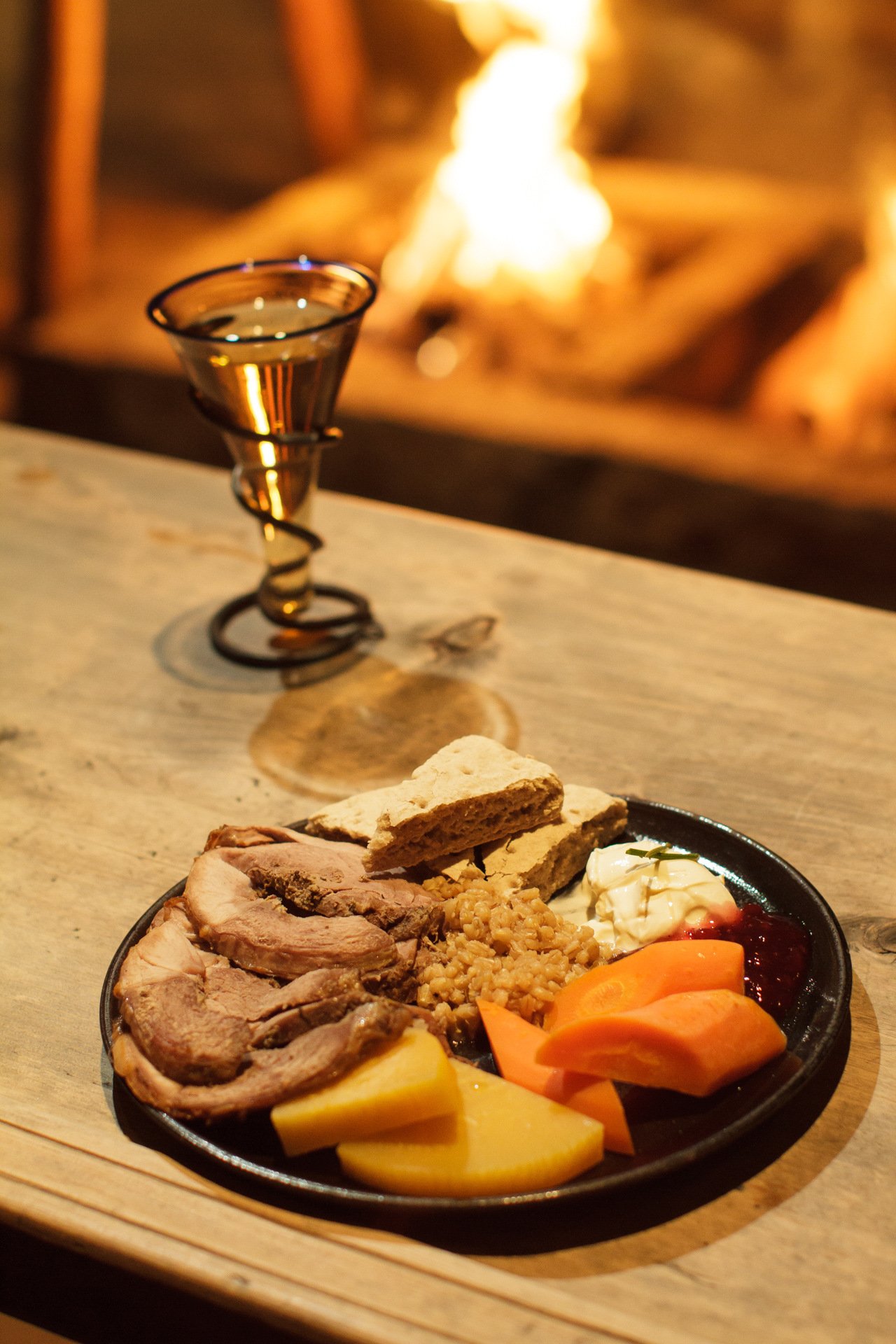Meet the Summers
Traveling solo can be a blessing because it means that you're able to establish contact with all kinds of people with interesting stories to tell. It mostly happens during an excursion or – as today – while waiting for the ship to dock.
The thrill of my last excursion – a RIB safari in Bodø still lingers as I pull on my rucksack once more and set course to deck six. I don’t have to walk far to find a TV screen showing useful information about what’s the next port and how long we’ll stay there. Furthermore, the monitor usually shows news about the excursions of the day and activities on board.
Brochures and other printed materials, on the other hand, are hard to find, except from the menus in the restaurants and the café, and the paper towels next to the wash basins. That’s due to the Havila Voyages’ effort to reduce waste including paper products.
I pull out two water bottles from my bag – the ones I shall bring with me on tonight’s excursion – and fill them up with fresh water from one of the water dispensers on board. This one is placed next to the coffee machine and a large selection of tea varieties on deck six. I cannot see any paper cups nearby; the guests are expected to use porcelain beakers instead. This is another way the shipping company avoids waste of disposables. One thing I really appreciate about Havila Voyages is their way of thinking about sustainability at all levels.
I put my water bottles back into my rucksack and find my way to the reception on deck four. The area is about to fill up with guests that will be getting off the ship in Stamstund. Most of them will join an excursion; either a dinner visit with the “Viking chief”, or a bus ride through the stunning Lofoten landscape. There, in a couple hours, we will all board the Havila Capella once again in Svolvær.
A Chance Encounter
The Expedition assistant Marie Strömbeck, whom I met on my very first day on this northbound journey up to Kirkenes, asks me to get into one of the two lines in front of the entry-end-exit section – or “the hatch,” as I prefer to call it.
While waiting for the ship to dock, the man queuing behind me notices a tiny, square object attached to the ceiling.
“Do you know whether that is the WiFi?”, he asks, pointing to the object.
I can tell by his accent that the man is American.
“Perhaps it’s the smoke detector”, I suggest.
“No, the smoke detector would be that one over there”, the man answers and points to another object in the ceiling a couple of meters further away.
“There you can see the sprinkler, and the sensor sits right next to it”.
It turns out that the American – whose name is Craig Summers, 50, and who’s standing here together with his wife, Christan Summers, 49 – knows a whole lot about sprinkler systems. He explains to me exactly what happens from the moment when the fire sensor picks up the smoke, until the glass inside the object next to it shatters and water is being ejected.
“Where did you learn all this?” I ask, more curious about this man’s background and experiences rather than the mechanics in the sprinkler system.
“When I was young, I used to volunteer at the fire department. I was bored in college, having a lot of spare time, and I wanted to make myself useful", he explains.
“How exciting! Have you ever saved someone’s life?” I ask.
“Yes, when I was in my twenties, I helped save a man who’d been in a car accident. He was drunk and crashed his car while driving full speed. The car was thrown across the road and then the driver got stuck inside the car wreck. He was very badly injured”, Craig remembers.
Mr. Summers and the rest of the fire squad on duty that day helped the man all the way to the hospital. Amazingly, he recovered completely.
“One year later, the man came back to thank us for saving his life. He told us that he sobered up after the accident and he found religion. That felt special", Craig says, smiling.
That was some story, I think to myself, and this is the kind of stories I can only get when I start asking questions. Besides, my experience is that most people like having nice chats with people they meet while traveling.
Then, “the hatch” is being opened, and we walk across the gangway.
It is not complicated to understand what bus I am to ride with from the quay. A guy wearing a Viking costume and a big sign in his hands is standing right in front of it. His name is Kristian and he’s a guide. He politely asks us to fasten our seat belts as it is mandatory in Norway.

Kristian tells us that in about 30 minutes we will be served a proper Viking feast meal...
.jpeg)
...in a reconstruction of an authentic, super long Viking house.
